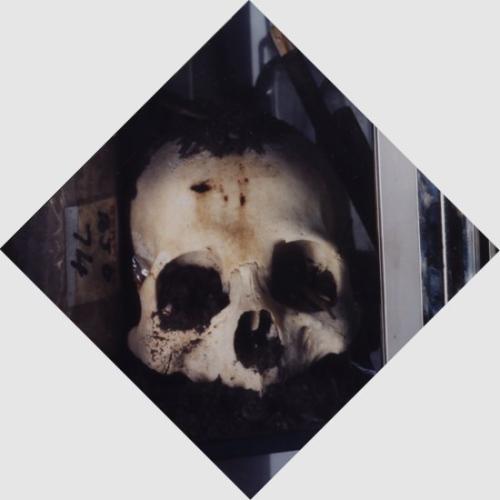Damien Hirst
dal 8/9/2003 al 19/10/2003
Segnalato da
8/9/2003
Damien Hirst
White Cube, London
Romance in the Age of Uncertainty. This extensive exhibition of new sculptures and paintings collectively examine, dissect and recast the story of Jesus and the Disciples.

Romance in the Age of Uncertainty
Romance in the Age of Uncertainty is the first solo exhibition of new work by Damien Hirst in London, since exhibiting Still at White Cube, Duke Street, in 1995. This extensive exhibition of new sculptures and paintings collectively examine, dissect and recast the story of Jesus and the Disciples. Through these new religious works Hirst explores the uncertainty at the heart of human experience; the confusing relations between love, life and death; communion and isolation; loyalty and betrayal. And in so doing Hirst brings into play religion, art and science, layering these categories together, opening them up, in works that tell new and different stories.
Amongst the works in the exhibition are the Apostles, a series of cabinets that represent the deaths of the disciples and the ascension of Jesus. There are thirteen sculptures in the series, each of which is a steel and glass cabinet, with a mirrored back surface, that contains objects arranged on several glass shelves. Most of the objects are now redundant laboratory glassware; transparent flasks, bell jars, crucibles and measuring tubes. In earlier works Hirst used the cabinets to present a scientific taxonomy of a single type of object, here the singularity and sterile 'sealed-in-ness' is replaced by a complex sensuous and baroque layering. Glassware, forceps and specimen dishes are mixed together with rosaries and crosses, there are also hammers, clubs and a sword and many of the cabinets are themselves violated with stigmata-like holes, their outer membrane cut through and stabbed, some spilling out blood-stained coils of plastic tubing-like entrails. These new works are layered, traumatised and porous.
Each cabinet is dedicated to a single disciple, an abstract portrait of his own particular martyrdom. Since the bodies are missing, we as viewers must work backwards from the point of violent death to reconstruct a life and identity of the victim through the various traumas inflicted and through examination of the objects within the cabinets. At the base of each cabinet stands the corresponding Disciple represented by a sacrificial cow's head that has been variously skinned, divided or inverted and preserved in formaldehyde in a glass tank. It is the inescapable factual reality of the cow's heads; their incontestable presence, that seems to refuse imaginative entry, to arrest thought, and throw you back on yourself. Relief comes with the tank dedicated to the ascension of Jesus, where the cow's head appears to have disappeared, leaving only a clear tank of formaldehyde.
Hirst's radical treatment of the The Last Supper presents Jesus and the Disciples as thirteen ping-pong balls suspended on spurting fountains of red wine, positioned along one side of a long Formica table. A silver chalice sits on the table and a white plastic washing up bowl to bathe Christ's feet. Plastic tubing and funnels for the wine are placed beneath it. Unlike many of Hirst's sculptures which use a glass case as the analytical and containing structure, this work is conceived as far less bounded, spilling messily into the space, it feels precarious and alive, hopeful but fragile.
Charity will be installed in the park in Hoxton Square. The sculpture subverts the classical practise of elevating a noble subject, by selecting the most dejected and wretched image of a disabled girl with her leg in a splint, scuffed clothes and her charity box broken into. Charity is based on a 1950s British charity donation box and yet, on this epic scale, it registers as both monumental and vulnerable, standing as a massive reproach, as if its size corresponds to the scale of our refusal to acknowledge a failure in charity. Unarguably about lived experience, it pushes into the social realm, speaking simply about injustice and the erosion of values.
For further information please contact Honey Luard or Susannah Hyman on 020 7930 5373. Open Tuesday to Saturday 10am - 6pm.
Opening Tuesday 9 September 6-8pm
White Cube, 48 Hoxton Square, London N1 6PB



